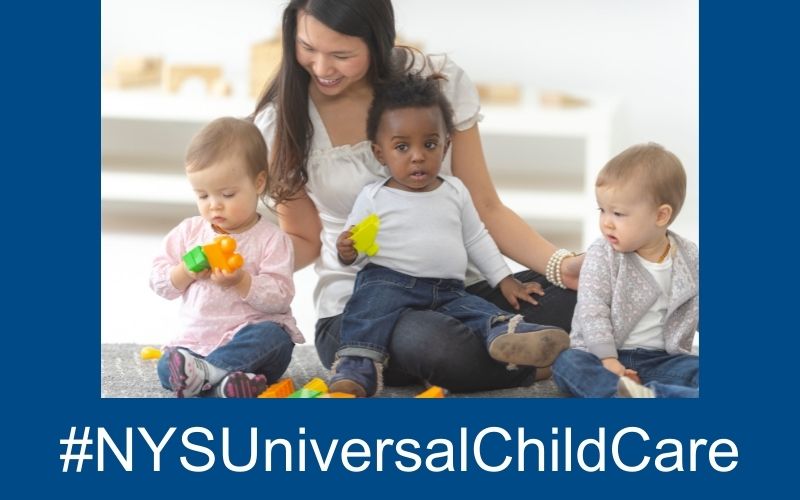By Dede Hill, Director of Policy
This is the moment for NYS leaders to invest in making child care accessible to all low income New York families while paying the child care workforce a thriving wage.
There are signals that New York is poised to make a significant $3 billion investment in child care in the 2022-23 New York State Budget.
Such an investment will transform the child care system; change the lives of many low-income New York families; diminish the workforce challenges facing businesses by getting parents, particularly women, back to work; strengthen the state’s economy; and stabilize the reeling child care sector.
All of this is possible if the final budget truly includes $3 billion, and if the funds are wisely invested in transformation.
Many New York families are currently left out of and unable to access subsidized child care due to insufficient public funding, onerous rules, and a lack of vision. Those left out include:
- Parents who are self-employed or work in non-traditional jobs. To gain access to subsidized child care, a family must be able to prove their income through paystubs, bank statements, and other traditional means. If parents work for cash, or are self-employed without well-kept records, or hold gig-economy jobs, they often cannot qualify.
- Parents who work fluctuating hours. These families may secure assistance, but are often unable to find a provider able to accommodate a shifting schedule. At present, a child can attend subsidized care only during the exact hours the parent is working. The moment a parent’s shift ends, the parent must pick up the child, whether the child is napping, eating lunch, or engaged in an educational activity. This is bad for young children for whom stable schedules and trusted caregivers are key to their well-being, and impossible for most providers, often operating with economic margins so razor thin that they must have every seat consistently filled to stay afloat financially.
Disproportionately represented among these families are the parents of the 35% of New York children in immigrant families. While nearly all of these children are technically eligible for subsidized child care, if their parents cannot prove their work status, or cannot find a provider who can accommodate fluctuating or extended hours, the child’s eligibility is in name only.
- The estimated 30,000 young children with immigration status that renders them ineligible for subsidized child care. Many of these parents are the essential workers that kept New York running during the darkest days of the pandemic, at great personal risk.
- Others families who are left out: families where a parent or caregiver is unemployed, disabled, or attending school. We must not leave these families behind.
The solution is clear: Make child care available to all children, just like public school, beginning this year with all low-income families.
This is also the year for New York to start paying the child care workforce a thriving wage; a wage that reflects the immeasurable value of their work.
The child care workforce is the essential workforce behind the workforce, the first teachers of our children. And yet, these care providers – nearly entirely women, largely women of color – are paid so little they live in poverty at twice the rate of New York workers in general.
Without a significant and sustained wage hike for the child care workforce, expanded access to child care subsidies will mean nothing because there will not be enough providers to meet demand.
We are hearing that New York leaders are reluctant to knock down barriers to equitable child care access because it would be administratively difficult. While true, it is shocking that our leaders would let administrative obstacles stand in the way of a historic transformation of our child care system.
If ever there was a moment for New York State to lead with courage and vision, this is it.


Recent Comments